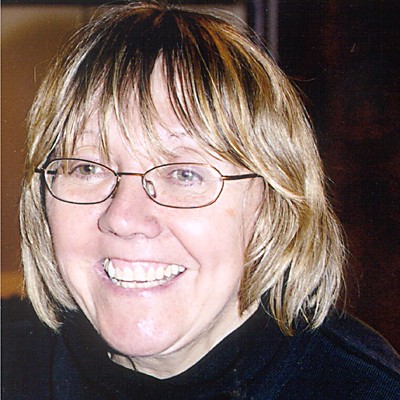Professor Marilyn Tremaine of Rutgers University has been a major contributor to the field of Computer-Human Interaction for almost as long as this field has existed. Beginning with her first publication in this area in 1979, she has nearly 80 refereed publications to her credit on topics that include computer-supported collaboration, effective data-base usage, interface formalization and design, assistive systems for the impaired and for rehabilitation, quantitative analysis of interaction methods, real-time indexing for video conferencing, tactile and audio modes of interaction, multi-modal interaction, comprehension of visualizations, distance communication and team structure issues relating to global software development, and time management tools.
In the course of her research she has advised and successfully graduated 14 PhD and over 20 MS students. Professor Tremaine obtained her MS in 1978 and her PhD in 1982 from the University of Southern California. She has been on the faculty of the University of Michigan as Assistant Professor of Computer and Information Systems from 1979 through 1986, the University of Toronto as Associate Professor of Computer Science from 1988 through 1997, Drexel University as Professor of Computer and Information Systems from 1997 through 2001, and the New Jersey Institute of Technology as Professor and Chair of information Systems from 2001 through 2005, where she is now Professor Emerita. During these last two appointments, she has been Research Professor in the Center for Advanced Information Processing with Rutgers University from 1997 to the present. She has also held research positions with EDS, Carnegie-Mellon University, Xerox PARC, and Lawrence Berkeley Labs.
Professor Tremaine has been a trail blazer in the field of HCI and a pioneer in applying digital media to a variety of problems. She has been a mentor to multiple generations of students, and a leader in establishing HCI as a legitimate field of research, both within computer science and on its own as a highly multidisciplinary activity that goes well beyond traditional boundaries. She has made seminal contributions via both research and professional leadership to the emerging field of computer-supported cooperative work; carried out significant research into telepresence and video collaboration environments, and helped educate the human-computer interaction community on survey and interview methods.
During her distinguished career she established the HCI program at the University of Michigan, helped build the field of HCI at the University of Toronto and indirectly across Canada, developed one of the pioneering computer-supported meeting facilities for EDS, and headed the CAVECAT, Jabber and Nonspeach projects at the University of Toronto, for video desktop conferencing, real-time indexing of meetings, and investigating audio interface design, respectively. At Rutgers and the New Jersey Institute of Technology she has focussed on multi-modal interfaces, visualization, assistive systems and teamwork at a distance in software development. She is Vice President of Usability New Jersey. As one of the original founders of ACM SIGCHI in 1982 and the annual CHI conferences, and as SIGCHI Chair during 1999-2002, she has a long record of support and encouragement for human-computer interaction. This includes numerous important positions over the years in SIGCHI and other organizations, notably as Vice-Chair of Communications, Chair of the Advisory Council, Vice-Chair of Finance and Chair of the SIG SIGCHI Education, member of the SIGCHI Curriculum Development Committee, member of the SIGCHI Executive Committee Advisory Board, Chair of the Graphics Interface Technical Program, Chair of conferences on human factors, on computer supported cooperative work, on computer assistance and usability. She serves regularly on paper selection committees and on several editorial boards for journals.





